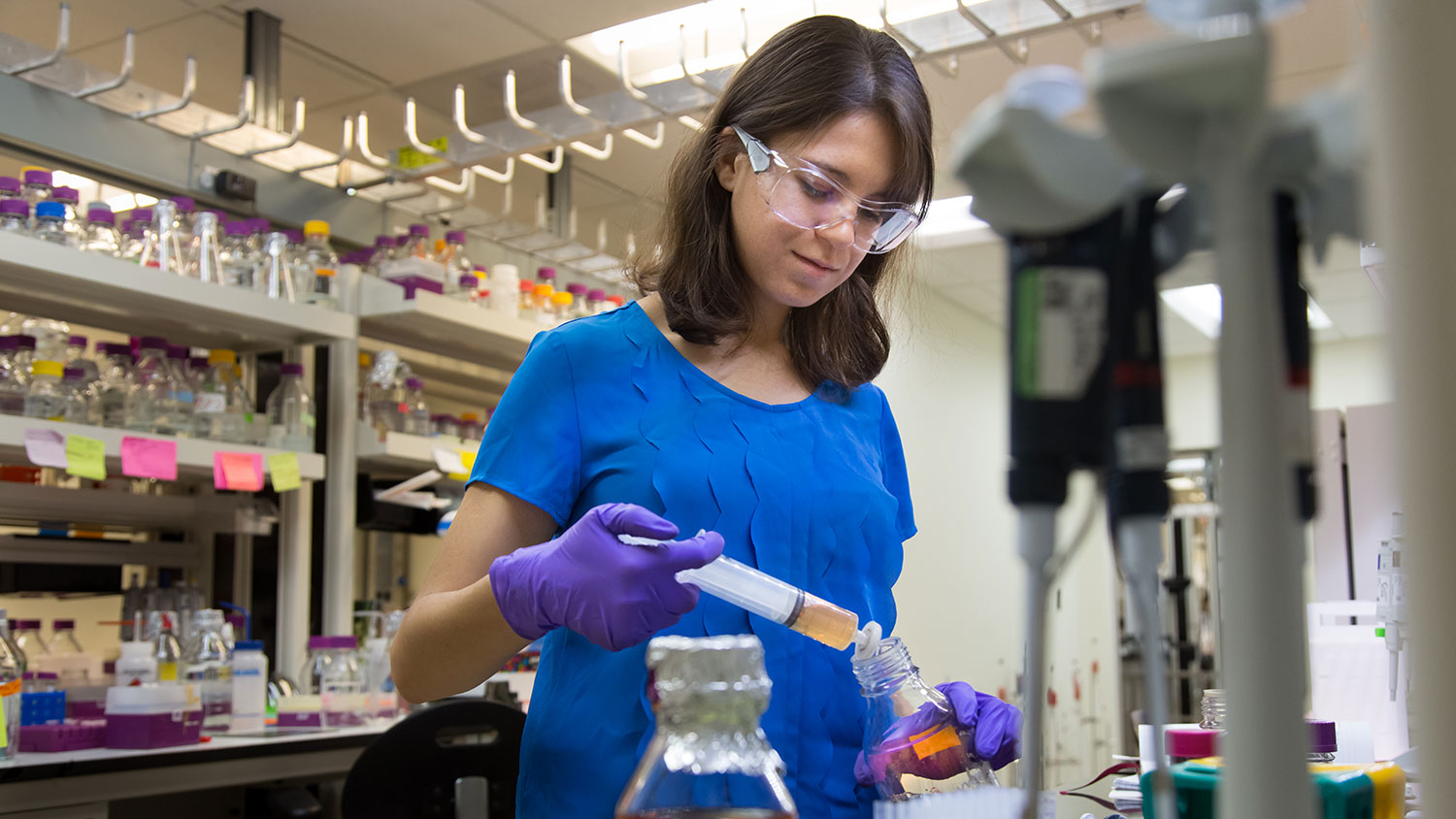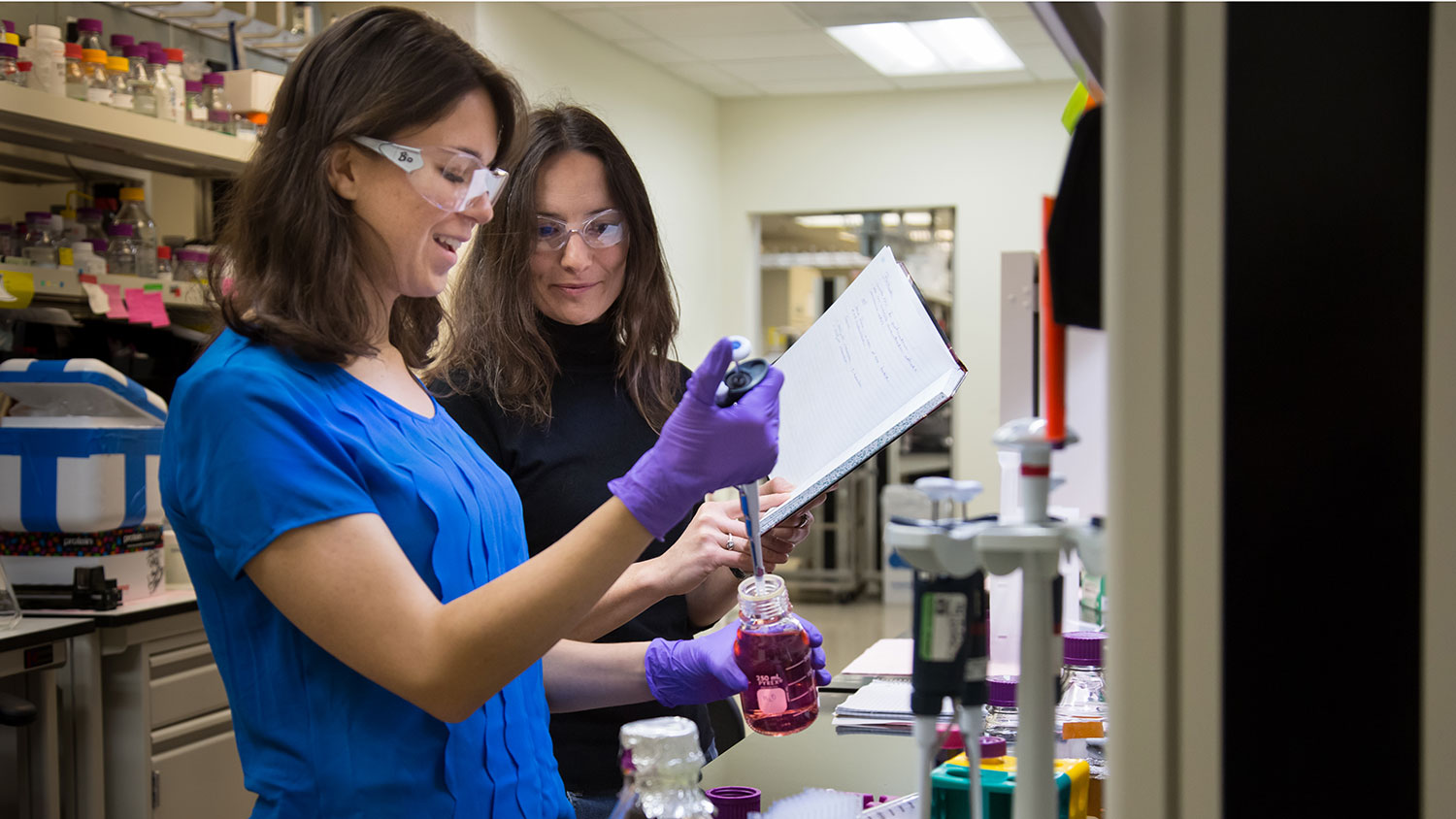Student Spotlight: “I Enjoy the Challenge of Solving Problems”

Biochemistry Ph.D. student Gabriela Schroder conducts cutting-edge protein research at Oak Ridge National Laboratory – the experience of a lifetime, she says – that has implications for drug development and human health.
Read on to learn about Gabriela’s journey from her home country of South Africa to NC State, a place she describes as fostering an “interdisciplinary and collaborative environment” that inspires her to pursue her goals.
Why did you choose NC State?
Before starting my studies at NC State, I did an undergraduate degree in biochemistry in South Africa, where I grew up. In 2015, I was awarded a Fulbright Fellowship which gave me the amazing opportunity to pursue postgraduate research in the United States. Graduate schools in the U.S. are well known around the world for providing students with a supportive and stimulating environment to perform research. I chose NC State because it is a research-driven institution that allows students to apply the knowledge they have learnt to answer the questions that interest them. During my undergraduate, I worked on structural biology and biocatalysis of a group of heme-containing proteins termed cytochrome P450s. My interest in their structure and function led me to my current PI at NC State, Dr. Flora Meilleur, who is also associated with Oak Ridge National Laboratory (ORNL) in Tennessee. This has allowed me to study my system of interest by employing novel and powerful techniques provided by a national laboratory which has only been possible because of the interdisciplinary and collaborative environment at NC State.

What are you working on now?
My research is currently focused on elucidating the structure of proteins using neutron protein crystallography. Neutrons allow a unique window into the inner workings of proteins since they make the “invisible” visible. Life on earth is water-based, and most of the chemical reactions that take place in organisms rely on water. Neutrons allow us to capture the interactions of water in chemical reactions and thereby elucidate the exact mechanism by which a protein functions. I am currently working on cytochrome P450s which are heme-containing proteins which “activate” compounds chemically by adding oxygen to them, helping an organism metabolize or break down these compounds. Since these proteins are so widespread, understanding how they function by elucidating their mechanism will ensure a broader range of applications of these proteins in drug synthesis and biodegradation. I am also working on a protein termed macrophage migration inhibitory factor that plays a role in inflammation and immunity. We seek to further understand the role of this protein in the body’s immune system by analyzing its structure and reaction mechanism in detail.
What’s your career goal?
I enjoy seeking answers and tackling challenging questions, so I am definitely interested in a career in research. My studies have taught me that there is so much to learn, and I’ll probably only uncover a fraction of the vast knowledge out there! The proteins I am working on are ubiquitous in most life forms and play an important role in drug metabolism and degradation of chemicals. Contributing to the understanding of how these enzymes perform their important roles and how they can be improved would be an important goal for me.
Tell us about your experience at ORNL.
Working at a national laboratory has been an incredible learning opportunity and has taught me the importance of collaboration. ORNL is a world-leading research facility that specializes in, amongst many other fields, neutron sciences. Being able to conduct my research at ORNL has allowed me to use instruments specialized in neutron protein crystallography, something very few research facilities offer. ORNL attracts researchers from all over the world, and this has given me the opportunity to interact and learn from fellow scientists on a truly international stage. The laboratories at ORNL focus on multiple disciplines including biology, physics, material science and computer science and the atmosphere of innovation has helped me to approach my project in new ways and try find novel ways of answering questions.
What do you enjoy most about your research?
I have always been inclined to science, particularly trying to puzzle out how things work on the small scale. Proteins are extraordinary molecules – they are the workhorses of a cell, powering processes and catalyzing important reactions, and I hope that I will be able to understand a bit more about how they perform such a range of functions. I enjoy the challenge of solving problems, and delving into the intricacies of protein catalysis has been a challenging but rewarding process. Learning from the experienced researchers around me has also been inspiring and I hope to continue learning and asking questions which I may or may not be able to solve!
What have you learned at NC State that you’ll take with you when you graduate?
Studying at NC State has broadened my horizons in a way I would never have imagined possible coming from a small town in central South Africa. The NC State motto “Think and Do the extraordinary” really sums up what I will take with me when I graduate. NC State has taught me that if I apply myself, I too can achieve something that will make a difference.
You can make a difference in the lives of students like Gabriela!
This post was originally published in College of Agriculture and Life Sciences News.
- Categories: